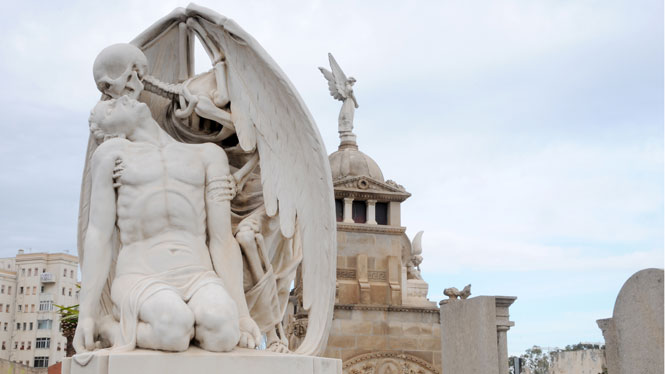Barcelona offers a wide range of interesting options all year round and opens its doors to everyone. Make the most of the sunshine to go for a stroll and take a dip in the sea on one of the city’s accessible beaches. Experience Gaudí’s nature with your hands, add a sign-language tour or an audiodescribed show to your plans… Do you need any more ideas? You’ll find them with the SEARCH FACILITY or on the SUMMARY for accessible places of interest!

If you want to find out why a cemetery can also be a work of art, a visit to the one in Poblenou will answer your question. It has two distinct areas: the original cemetery and the part that was extended in the second half of the 19th century. There are nooks and corners of great artistic and historic interest and special poignancy throughout the cemetery grounds.
Poblenou cemetery is really a small museum of funerary art, filled with sculptures and harmonious corners. The old cemetery was destroyed by Napoleon's troops in 1775 but was rebuilt in 1819, based on a design by the Italian architect Antonio Ginesi. The new cemetery was designed in a sober, neoclassical style featuring elements that reveal an Egyptian influence.
The cemetery houses the tombs of eminent Catalans, such as the composer Josep Anselm Clavé, the playwright and poet Serafí Pitarra and the Maldà family. There are also anonymous tombs, such as the final resting place of the "santet", or little saint, of Poblenou: a boy from the neighbourhood who still receives many floral tributes. Or the tombs of gypsies, often featuring highly realistic sculptures, such as the one of the elegantly dressed gentleman with his inseparable packet of cigarettes in his pocket.
The cemetery was expanded in the second half of the 19th century; the modern part made it possible for the affluent families of the Barcelona bourgeoisie to build pavilions and mausoleums of great artistic quality. Around the cemetery there are extremely beautiful sculptures such as Jaume Barba's Petó de la mort (Kiss of Death), which dates from 1930.